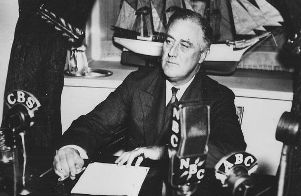Overview:
World War II Timeline
Allied Powers and Leaders
Axis Powers and Leaders
Causes of WW2
War in Europe
War in the Pacific
After the War
Battles:
Battle of Britain
Battle of the Atlantic
Pearl Harbor
Battle of Stalingrad
D-Day (Invasion of Normandy)
Battle of the Bulge
Battle of Berlin
Battle of Midway
Battle of Guadalcanal
Battle of Iwo Jima
Events:
The Holocaust
Japanese Internment Camps
Bataan Death March
Fireside Chats
Hiroshima and Nagasaki (Atomic Bomb)
War Crimes Trials
Recovery and the Marshall Plan
|
Leaders:
Winston Churchill
Charles de Gaulle
Franklin D. Roosevelt
Harry S. Truman
Dwight D. Eisenhower
Douglas MacArthur
George Patton
Adolf Hitler
Joseph Stalin
Benito Mussolini
Hirohito
Anne Frank
Eleanor Roosevelt
Other:
The US Home Front
Women of World War II
African Americans in WW2
Spies and Secret Agents
Aircraft
Aircraft Carriers
Technology
World War II Glossary and Terms
|
